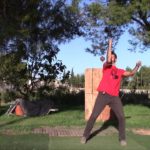I have read different things, (not many), and it seems like there are different ideas about this subject.
It is a long time that I wanted to make this video, and it is exactly because of those contradictions that I hesitated, but, by the time, I have become more confident with my actual ideas, so I made the video. I think there shouldn’t be big errors in it, but the subject is not simple, then I have not studied physics, so criticism will be well accepted.
Some time ago Ta0 suggested me to read a book, Spinning tops by JOHN PERRY, (it is a nice book that can be found for free on gutenberg.org).
In this book there is an explanation of the rising top, which I partially included in the video, (from 5:20).
The explanation given by Perry is that the peg rolling on the table hurries on the precession, and, doing so, the top rises in opposition to gravity.
My explanation is partly different from that given by Perry, because I believe that the peg rolling on the table by itself is not enough for to cause a push in the direction of to hurry on the precession;
a torque is needed, acting on the axis of rotation, for to make the top rise.
A torque is a couple of forces, (two fingers are needed for to turn a key), or a force and a resistance.
In the case of the spinning top, one force is the peg rolling on the table and pushing the top in one direction, but which is the other force/resistance ?
In the sample in my video, it is inertia at the center of mass, which, temporarily, for a short while, opposes the push of the tip, so the top can rise a bit.
This could happen at the beginning of a spin, when the top is already spinning but it is not moving yet along the table.
But, as the top moves along the precession trajectory, the tip and the center of mass go hand in hand, with the same angular speeds, so there isn’t anymore an inertial resistance, nor a torque consequently, to make the top rise.
In gyroscopes it is sufficient to push a gimbal for to hurry on the precession;
but this is different, because, while pushing the gimbal, we are indeed applying a torque to the rotor of the gyroscope, not a simple force;
in fact the center of mass of the rotor of a gyroscope is held in a steady position by the gimbals.
A torque is needed for to make a top rise.
Since the center of mass of a top is not steady but it is free to move where it wants, I believe that the effect of the rolling tip on the table is not that of to make the top rise, but only that of to move the center of mass and the whole top along a circular trajectory on the table.





